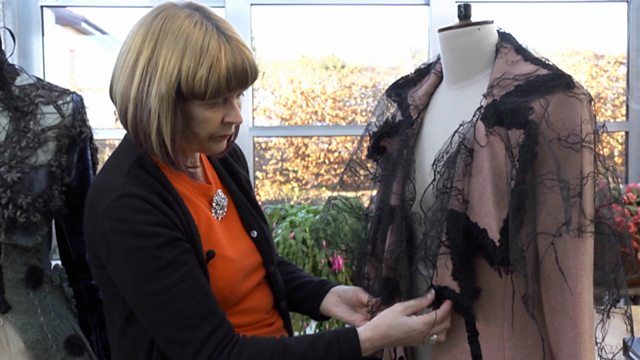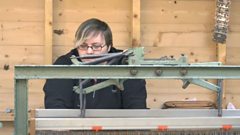
A look at wool - it's historical place in the Scottish economy and how some are now taking fresh approaches with how it's used today.
Tha a' chlòimh air a bhith riatanach dha mac an duine fad iomadh bliadhna. Bha sinn gar còmhdachadh fhèin leatha , agus bha i gar cumail blàth. Rinn cuid fortan aiste agus i cho deatamach dha eaconomaidh na dùthcha 's gun tug i iomadh buaidh phoilitigeach air cùisean.
Ach nuair a nochd clòimh fhuadain san 20mh linn, bheagaich an ùidh anns a' chlòimh, thuit a' phrìs gu mòr, agus dh'fhuiling an gnìomhachas.
Bho chionn ghoirid ge-tà tha cuid ag ath-nuadhachadh mar a tha i air a chleachdadh san là 'n-diugh, 's a ' feuchainn ris a' ghnìomhachas phrìseil seo ath-bheothachadh sna h-eileanan agus nas fharsainge. Coinnichidh sinn ri cuid a th' air am beò-ghlacadh leis a' chlòimh agus aig cridhe a' ghluasaid ùir seo.
Wool has been a vital commodity for mankind for millennia. It clothed us, kept us warm, made some fortunes and was used as a political tool causing power struggles and strife.
However, the invention of synthetic fibres in the 20th century led to a dramatic fall in the demand for wool. Prices fell drastically. Producers struggled.
Recent years have seen a resurgence of interest in this natural fibre. People are rediscovering the joy of working with it, resurrecting old processes and finding new ways to work with wool. We meet some of these wool evangelists and uncover what it is about wool that makes them so passionate.
Last on
More episodes
Clips
-
![]()
Bha ainm air gach pàtran
Duration: 00:37
-
![]()
Tha ceangal eadar snìomh agus ealain
Duration: 01:17
Broadcasts
- Mon 15 Jul 2013 21:00
- Tue 16 Jul 2013 22:00
- Mon 28 Sep 2015 21:30
- Tue 29 Sep 2015 22:00
- Mon 13 Feb 2017 21:00
- Tue 14 Feb 2017 22:00



